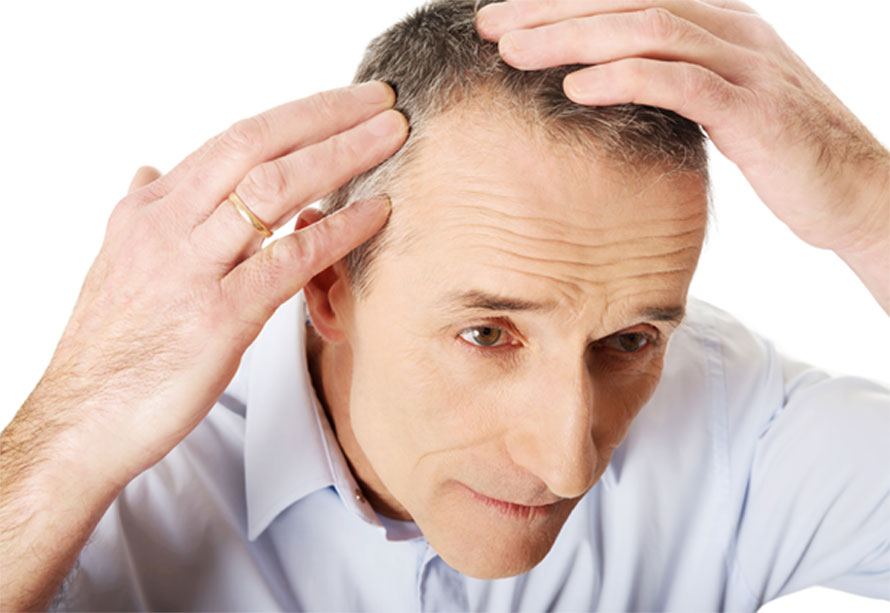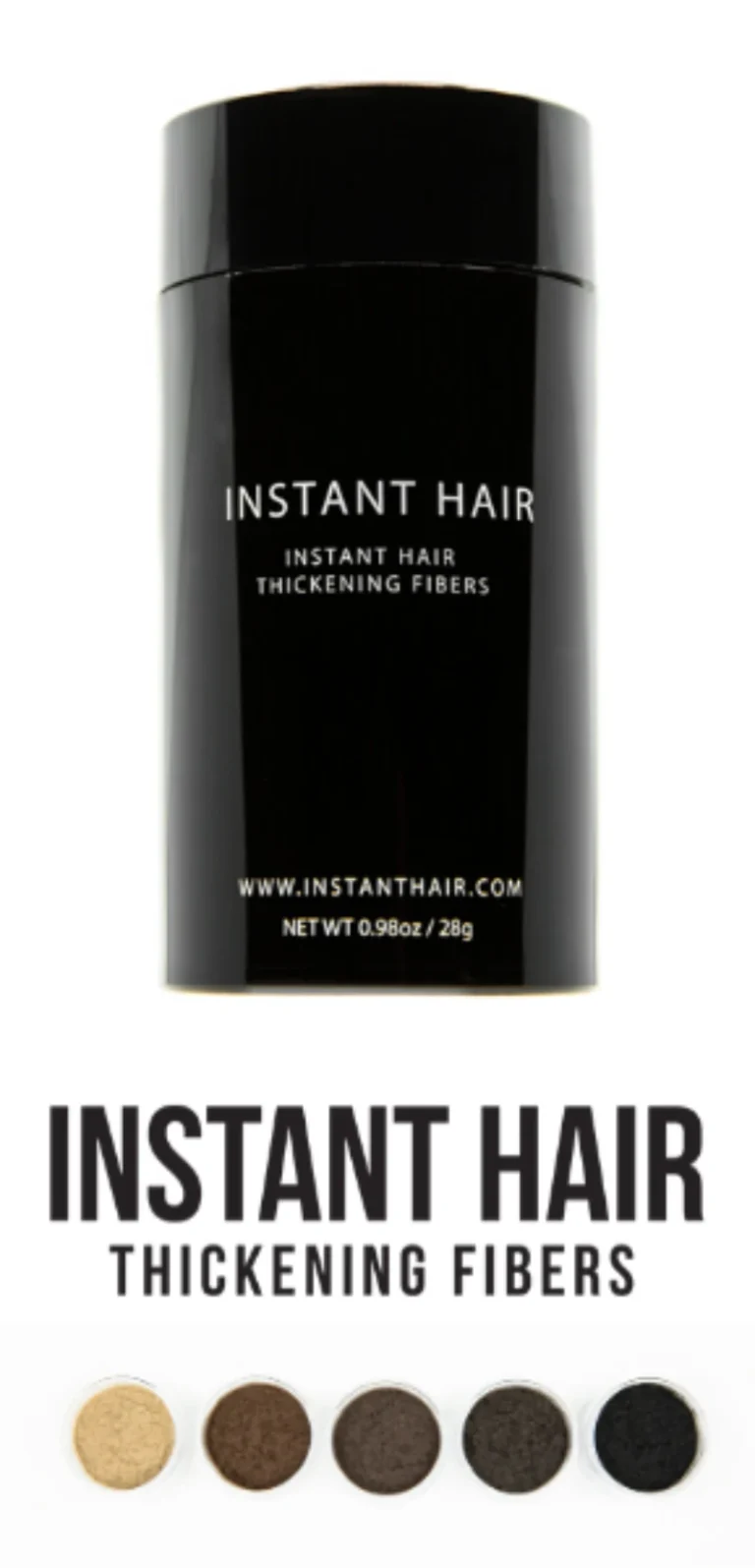Guide to Hair Loss for Men
In the majority of cases, balding in men is hereditary and caused by an increase in the production of the hormone dihydrotestosterone. However, there are other things that can cause hair loss. Read on to our comprehensive guide to hair loss to understand more about your hair loss and options.


Toronto Hair Transplant Surgeons are internationally known for our pioneering work in hair transplantation.
Causes Of Hair Loss in Men
Understanding hair loss and its causes
Welcome to our resource center on dealing with hair loss. We’ll be looking at every aspect of hair loss, including the treatments that are available and ways you can build confidence when you are dealing with hair loss. First, let’s look at what causes hair loss to occur.

What causes hair loss in men?
In the vast majority of cases, balding in men is hereditary and caused by an increase in the production of the hormone dihydrotestosterone, or DHT. Your hair follicles are very sensitive to DHT and when enough of it is produced in the body, it will cause your hair follicles to shrink and your hair to thin out.
Types of hair loss
Although the root cause of hereditary balding (also called male pattern balding) is the same, not all men will have the same type of balding. Because everyone has a unique biological makeup, the rate at which men lose hair varies, as does the type of balding pattern they suffer from. Below are the three main types of hair loss seen in men.
Thinning at the crown – This is a very common type of male pattern baldness and is quite self-explanatory. Men who have thinning at the crown often don’t notice their baldness pattern until it’s fairly advanced. This makes sense, since it’s out of sight and only becomes noticeable once it’s progressed considerably.
Receding hairline – Another common form of male pattern balding is a receding hairline. This is when the hair recedes at the temples and creates a V shape many men don’t find desirable. A receding hairline is usually considered to be more difficult to treat than thinning at the crown, although a lot of guys have had success with regrowing hair in this area.
Diffuse thinning – Diffuse thinning is a type of male pattern balding that isn’t focused on one specific part of the scalp. Instead, hair thins all over at a steady rate. That being said, the hair on the back and sides of the scalp remains unaffected in most cases, as this hair is genetically programmed to be permanent.
Is hair loss always hereditary?
Although the majority of cases of hair loss in men are hereditary, there are other things that can cause it. Alopecia, for example, is a condition that can cause total or partial hair loss even in children and is not related to male pattern balding.
Things such as extreme stress and trauma can also lead to balding, though in most cases this is temporary and the hair does grow back after a period of time.
Our Results

Toronto Hair Transplant Surgeons are internationally known for our pioneering hair transplantation work.
Our huge archive is here to help you see what we can do for you. Use the link below to view some sample cases.
The three main options for those dealing with hair loss
If you’ve noticed your hair is thinning, you may be wondering what you can do to slow the progress of your hair loss. The good news is that nowadays there are viable options for tackling hair loss effectively.
Hair loss medication
Considering how big of a subject hair loss is in our society, it’s amazing how many people are not aware of the proven treatments that are now available. Although these treatments don’t work for everybody and have varying efficacy rates, they are proven to be effective for the majority of guys who try them and have been approved by the FDA and Health Canada.
The two main treatments that are proven to work are finasteride and minoxidil. You’ll probably recognize them better by their brand names – Propecia and Rogaine. Both of these treatments are ongoing and must be applied topically or taken orally once a day to maintain results.
Hair transplant
If you have tried treatments and they haven’t been successful, or if your hair loss is quite severe, your next option is a hair transplant. Many people still have a negative view of hair transplants, mostly because of misinformation through the media or because they aren’t aware of the advancements that have been made.
Modern hair transplants are carried out using very refined methods wherein individual hair follicles get extracted from the back of the patient’s head and transplanted one by one. This allows for natural-looking and long-lasting results.
Concealing products
If for whatever reason you don’t want to take treatments or get a hair transplant, you do have a third option: concealing your hair loss. Traditionally, the only way to conceal your hair loss has been by wearing a hairpiece, but there are now other options.
Hair fibers are one of the most popular types of concealing products, and when applied to your scalp, will cling to your existing hair to give it a thicker and fuller appearance. Hair fibers come in a wide range of colours so you can pick one to match your natural hair colour. The Toronto Hair Transplant Surgeons has it’s own brand called Instant Hair Thickening Fibers.
THTS Gallery


Familiarize yourself with our layout before you come in.
Visit the gallery to take a peek at our Oakville based clinic layout and surgical rooms.
5 SIGNS YOU’RE LOSING YOUR HAIR
Hair loss is something nobody wants to deal with. Not only does it affect the way you look, but it can also have a big impact on your confidence. While there are viable treatments now available, they work best when you catch your hair loss early. Therefore, it’s very useful to know what the telltale signs are, so you can act quickly.
Below are some of the telltale signs of hair loss in men:
- You notice more hair on your pillow – Although everyone loses a certain amount of hair each day naturally, if you notice a lot of hairs on your pillow in the morning, there’s a good chance your hair is starting to thin. You should inspect your hair closely in the mirror to get a better idea.
- You notice hair coming out when you’re showering – This is another key sign of hair loss in men. If you notice a lot of hair in your hands when you wash your hair, this is a good indicator you’re suffering from hair loss.
- Comments from others – It’s not uncommon for a person to be unaware of their hair loss until someone else points it out. This is particularly true for those who have thinning at the crown. While strangers probably aren’t going to say anything, friends and family might not be so tactful.
- You can see thinning when you look in the mirror – If you have diffuse thinning (e.g., thinning all over your scalp), you’ll almost certainly notice this when you look in the mirror. Hair loss is very noticeable to guys who have previously had a full, thick head of hair, so when you start noticing it looks thinner, this is almost certainly as a result of male pattern balding.
- You notice your hairline is receding – Not all guys who suffer from male pattern balding will have a receding hairline, but a lot do. A receding hairline is unmistakably a sign of male pattern balding.
What can I do about it?
If you have noticed any of the above signs, your first thought will probably be, ‘What can I do about it?’
It’s first recommended you start a course of treatment in the form of finasteride and/or minoxidil to see how you respond. Often, starting one or both of these treatments is enough to halt the hair loss and in some cases, reverse it.
If you don’t respond well to those treatments, there are other options available such as PRP and low-level laser therapy. And of course, the other option is to get a hair transplant. It’s worth pointing out that hair transplants are not recommended for guys who have only just started losing their hair, so you should always try treatments first to see how well you respond.
5 STEPS TO TAKE WHEN HAIR LOSS STARTS
If you’ve only just noticed that your hair is starting to thin, it’s not an uncommon reaction to panic and start frantically searching online for the solution. Suffice it to say, this is not the best plan of action. There are countless scammers out there just waiting to take the money of vulnerable and insecure guys suffering from hair loss.
To help you make the best decisions, below is a five-step plan for dealing with hair loss in its early stages.
- Assess your attitude toward it – The first thing to do is assess your attitude toward hair loss. The majority of guys do not give a second thought towards hair loss until it starts to affect them. Hair loss is generally considered to be an undesirable aspect of aging in our culture, but this doesn’t mean you must have this attitude. There are plenty of guys who genuinely aren’t too concerned about losing their hair, and just start shaving their head. If you’re not too disturbed by your thinning hair, you could save yourself a lot of time, money and stress by accepting it.
- Do your research – If you find yourself unable to accept balding, the first thing to do is research the available treatments. The Internet is an invaluable tool for this, but you should be very careful about how, and more specifically, where, you do your research. For example, forums can be a great place to get unbiased advice, but they can be very opinionated and emotional places. If you want to get the raw facts about the available treatments, you’re better off going to medical websites to avoid all the conjecture and drama forums can bring.
- Get on treatments – Once you’re aware of the available treatments, you can then make a decision about whether or not you want to try them. The two main treatments that have proven to be effective for treating hair loss are minoxidil and finasteride. Both come with some risk of side effects, although they only affect a small percentage of men and subside with discontinued use.
- Measure your results – You should wait at least 6 months before assessing the results of your hair loss treatments. Far too many people expect instant results when taking minoxidil and finasteride – quitting after a few weeks when they don’t notice drastic change. Truly assessing whether hair loss treatments are effective for you can take 6-12 months. You should take a picture of your thinning areas prior to starting treatment and again at 1-month intervals. This will take all guesswork out of assessing your results.
- Consult an expert – If you find that treatments have slowed/reversed your hair loss to a degree you’re happy with, you can stick with them. If, however, you’re not responding well to treatments, or have severe side effects, the next step is to consult an expert.
10 EFFECTIVE WAYS TO DEAL WITH HAIR LOSS
Hair loss is something we’d all rather not deal with. However, a good percentage of men and women will be faced with hair loss at some point their lives. Luckily, there are now several ways to combat hair loss effectively. Below are 10 of the best:
- Finasteride – The primary cause of male pattern balding is dihydrotestosterone (DHT). Finasteride (brand name Propecia) is the only FDA approved treatment available on the market that’s proven to lower DHT levels and halt/reverse hair loss in men. While it’s not effective for everyone and results do vary, for thousands of men around the world, Finasteride has proved to be an invaluable part of their regimen.
- Minoxidil – Minoxidil better known by its brand name, Rogaine, is another clinically proven treatment for hair loss many men swear by. It works in a different way to finasteride by opening the blood vessels in the scalp and therefore allowing for better hair growth. As with any hair loss treatment, minoxidil is most effective when used as a preventive measure rather than a way to get back a lot of hair.
- Use a shampoo containing ketoconazole – If you’ve done any research on hair loss, you’ve probably heard the term ‘the big 3.’ This refers to the 3 treatments that are proven to be effective at tackling hair loss – finasteride, minoxidil and ketoconazole. There are many great hair loss shampoos that contain ketoconazole including Regenepure DR and Lipogaine Big 3.
- Get a hair transplant – A lot of men see getting a hair transplant as being a desperate last measure but this couldn’t be further from the truth. Modern hair transplantation techniques mean it’s possible to achieve incredibly natural-looking results now.
- Consider hair fibres – Not everyone wants to go down the hair transplant/medication route. For such people, hair fibres can be an excellent way to cover up any areas where you’re thinning. Although hair fibres are purely a temporary cosmetic treatment, many men find that they do an excellent job of restoring their confidence and make them feel less self-conscious about their thinning hair.
- Change your diet – Although male pattern balding is primarily down to genetics, your diet also plays a role in how aggressive MPB is. The best diet for strong, healthy hair is one that contains lots of protein, vitamin D and omega-3 fatty acids. Salmon and walnuts are both excellent foods to eat for healthy hair.
- Exercise more – Regular exercise is a great way to combat stress and promote a healthy body and mind. Many people find they don’t have the time to go to the gym, but you can incorporate exercise in all parts of your life. It’s important not to overdo it and find the right balance that works well for you.
- Take care of your scalp – When dealing with hair loss, it’s very easy to focus solely and your hair itself and neglect where it grows from. There are many excellent ways you can take care of your scalp. Scalp massages, for example, are an excellent way to improve the circulation in your scalp, which in turn promotes hair growth. There are also many excellent lotions that contain natural ingredients you can apply to your scalp.
- Focus on improving your overall appearance – Dealing with hair loss doesn’t just mean trying to prevent it, but improving your confidence in other areas of your life. While losing your hair can have a negative impact on your confidence, there’s plenty you can do to get that confidence back, including getting in shape, dressing better and grooming.
- Consult an expert – If you are particularly concerned about your thinning hair, it’s a great idea to consult a hair loss specialist. A specialist will be able to advise you on the best course of treatment for your particular type of hair loss. For example, if you have a receding hairline, a different approach might be recommended when compared to someone who has a thinning crown.
10 HAIR LOSS STATS YOU DIDN’T KNOW
Hair loss is a subject that’s surrounded by myths and half-truths. This being the case, some solid stats are always welcome. Below are 10 hair loss stats that you probably didn’t know.
- 60% of men can’t spot a hair transplant – There was a time when hair transplants were viewed as a last desperate measure for men who couldn’t accept they were losing their hair. A few decades back, the horrendous ‘plug’ look that transplants provided meant you could spot them a mile away. Things have come a long way since then, however, and modern transplant techniques such as FUT and FUE hair transplant mean that 60% of men cannot spot a hair transplant. This is according to research conducted by the International Society of Hair Restoration Surgery (ISHRS) in 2009, where men were shown a lineup and three-fifths couldn’t tell who’d had a transplant.
- 9 out of 10 men who are balding say hair loss is their No. 1 concern – This stat really reveals how damaging thinning hair can be to a person’s confidence. It’s easy for those who haven’t been personally affected by balding to see it as a trivial matter when compared to problems that are seemingly more serious. However, with so many men citing hair loss as their chief concern, it’s clear that it’s a big problem.
- 40% of men have noticeable hair loss by their mid-30s – When you suffer from hair loss, it’s easy to notice all the guys around you who have a perfect head of hair; however, hair loss affects most men at some point in their life. While the majority of men still have their hair in the 30s, those numbers change significantly as men age, with 85% of men having some form of hair loss by age 50.
- 75% of British men believe hair loss is not preventable – Whether or not hair loss is preventable is certainly a topic of debate. While 75% of British men believe it is not, it’s clear that there is yet to be a treatment available that works for everyone. While finasteride and minoxidil are both proven treatments, they don’t work for everyone, and their effectiveness can vary greatly.
- 50% of hair is gone before it becomes visible – This is one of the scariest stats regarding hair loss. Most men believe they started losing their hair once it was visibly apparent, but it could have started a lot earlier. This is because 50% of your hair is already gone before it becomes visible. This is why it’s always better to get treatment as early as possible so you don’t have to make up for lost ground later on. If you don’t know which treatment you want to use to regrow your hair then take a look on Male Health Review to look at the options available.
- 47% of hair loss sufferers would spend their life savings to get their hair back – This seems like an incredible figure, but for those whose confidence is severely affected by hair loss, giving up their life savings to get their hair back probably seems like a small sacrifice. This stat also reveals just why the hair loss industry is worth as much as it is each year. Hair loss is something nobody wants to deal with, and many are prepared to spend a lot of money to combat it.
- 35 million American men are suffering from male pattern baldness – To put it another way, that’s roughly 10% of the entire population of the United States. Given this number, it’s clear male pattern balding is not a small problem nor is it unique to just American men. Many men all across the world look for ways to combat thinning hair, and as with any health condition, hair loss is better treated as early as possible.
- The occurrence of balding in men matches the decade of life they’re in – It’s a somewhat surprising fact that the percentage of male pattern baldness in the general population correlates to the decade of life a man is in. In other words, roughly 20% of men in their 20s have MPB, 30% of men in their 30s, 40% of men in their 40s, and so on.
- Hair loss affects roughly 50% of women – Hair loss isn’t something that just affects men, although you’d be forgiven for thinking this because of the way it’s portrayed in the media. There are in fact many women around the world who are suffering from hair loss, too. The most common type of hair loss women suffer from is thinning, although it’s also very possible for women to have alopecia.
10 THINGS THAT MAKE YOUR HAIR FALL OUT
Genetic factors are the most common reason for hair loss in men, but there are other things that can either cause or speed up hair loss. Below are 10 of these things.
- Medication – There are a surprising number of common medications on the market that list hair loss as one of the potential side effects. This includes medication such as aspirin, vitamin supplements, blood-thinning drugs and blood pressure medication. If you suspect a medication you’re taking is causing your hair to fall out, you should consult your GP and they’ll be able to recommend an alternative.
- Surgery – Believe it or not, surgery can result in hair loss, too. When combined with anesthesia, surgery can have a very stressful impact on your body and can affect the lifecycle of your hair. This is why hair loss as a result of surgery often occurs a few months later.
- Crash Dieting – Your diet impacts your health in every way, and this includes the health of your hair. When you crash diet, you’re depriving your body of the vital nutrients it needs to keep your hair healthy. Therefore it’s never recommended that you put your body through extreme diets if your hair is important to you.
- Tight Hairstyles – Tight hairstyles such as ponytails, braids and cornrows can certainly cause hair loss. By pulling your hair so tight, you can permanently weaken the hair follicles and cause your hair to become thinner.
- Scratching Your Head – Excessively scratching your head can also cause hair loss. If you find your scalp is itchy and irritable, there are many excellent shampoos and conditioners on the market to help with this.
- Not Washing Your Hair – Not washing your hair often enough causes it to become greasy and unhealthy. Going back to the point above, it will also make your scalp susceptible to spots and other blemishes that can cause excessive scratching.
- Hair Appliances – Not all hair loss is caused by the hair coming out at the root. Often, hair loss is caused by damage and breakage, usually due to the hair being too dry or too hot. Appliances such as hairdryers, curling irons and straightening irons can all cause your hair to become damaged and break.
- Stress – It’s often believed hair loss caused by stress is a myth, but extremely stressful and traumatic events can indeed result in hair loss. However, hair loss caused by stress is nearly always temporary, and any shedding will usually cease within a couple of months or following the resolution of the stressor.
- Dyeing Your Hair – Excessively dyeing your hair is another thing that can cause hair loss. Most hair dyes contain harsh chemicals that cause your hair to become dry, which can often result in breakage and thinning of the hair.
- Anemia – Anemia, or more specifically iron-deficiency anemia, has hair loss as one of its symptoms. People suffer from this condition due to iron levels in the body being too low, usually as a result of poor diet or problems with iron absorption.
How Diet Boosts Hair Health
Diet And Hair Loss
A diet low in protein correlates to unhealthy hair and hair loss.
On average, after a two to three month shortage of protein, hair loss begins. That’s because the body shuts down hair growth to preserve protein. Furthermore, a lack of vitamins makes your hair look brittle and lifeless. It also stunts hair growth.
Therefore, food plays an important role in the health of your hair.
What to Eat
The following foods are linked to maintaining not only the health of the hair, but its preservation as well:
- Chicken – Contains essential iron, vitamin B, and zinc, all of which prove vital for hair. Zinc also helps prevent a flaking scalp.
- Clams – Contains iron, making clams conducive to hair health.
- Oysters – Contains zinc and iron.
- Salmon – Omega-three acids and vitamin D both of which help maintain a healthy hair and scalp.
- Other iron-fortified foods – cereal, lentils, pumpkin seeds, white beans, and spinach all help keep hair healthy looking and on your head.
- Sweet Potatoes – Sweet potatoes contain the antioxidant beta-carotene. In the body, antioxidant beta-carotene transforms into vitamin A. The proper function of every cell of the human body relies on vitamin A. However, too much vitamin A correlates to hair loss or dull, lifeless hair so make sure to not over consume.
- Walnuts – Bitoin, Vitamin E, and omega-three fatty acids make walnuts an important part of the diet. Try replacing your salad dressing with walnut oil for an extra hair vitamin boost, or cook with it.
And even though it’s not exactly a food, milk is great for your hair because of the vitamin D. Choose a low-fat option if you are keeping an eye on your weight.
Other Food and Hair Tips
A quick and unhealthy weight loss sometimes stems from poor eating habits. That will cause your hair to stop growing and could result in hair loss. Therefore, avoid fad diets.
A vegetarian lifestyle doesn’t have to mean a lack of protein. If you are a vegetarian, make sure to include plenty of beans, nuts, seeds, sweet potatoes, and other non-animal foods in your daily intake to make-up for not eating meat.
If you are eating healthy yet still suffering hair loss or dull hair, then you may need to have your hormones checked or be examined for an underlying illness.
Hit the Cookbooks
So no matter if you’re a meat eater or a vegetarian, hit the cookbooks and create some tasty dishes to keep your hair healthy. And hey, if you learn to cook—or learn to cook better—it could even enhance your social life.
Who doesn’t want that?
Sources:
http://www.healthaliciousness.com/articles/beans-legumes-highest-protein.php
http://www.webmd.com/beauty/hair-styling/top-10-foods-for-healthy-hair
Ways to build confidence
If you’ve been following along up to now, you’re much better informed than most people when it comes to the subject of hair loss, treatments and hair transplants. In this final section, we’re going to look at ways you can build confidence when dealing with hair loss.
Often, men react negatively to hair loss because it often severely impacts their confidence. It may make them feel insecure about how they look and bring a fear of judgement from other people.
Depending on how severe your hair loss is and how well you respond to treatments, you may or may not be able to stave off your hair loss. Whatever the case, one of the best things you can do to deal with it is by doing other things that build your confidence. With this in mind, below are some reliable ways to build confidence.
Get in great shape
This one is somewhat of a cliché, but for good reason – it actually works! Getting in great physical shape isn’t just about changing the way you look; it’s about pushing yourself to your limits and giving yourself more energy and vitality.
Getting in great shape means having a focused, goal-driven plan as well as feeding your body the right types of food. Your goal might be to train for a marathon, or to be able to double the amount of weight you can lift. Whatever the case, you should have a clear idea of what you want to accomplish and make it a priority to get there. Hiring a personal trainer is never a bad idea, since they can give you the right training and diet advice to accomplish your goals, as well as keeping you motivated.
Dress better
It’s amazing how much of an impact dressing well can have on your confidence. A lot of guys just wear what’s comfortable and don’t put too much thought into how they dress. If losing your hair is causing you to be self-conscious about your appearance, one of the best things you can do to build confidence is put an effort into how you dress.
Dressing well doesn’t mean having to spend a lot of money on designer labels. It simply means getting clothes that look smart, are color-coordinated and suit your style. Get the advice of friends and family if you’re not sure what type of clothes suit you best.
Focus on accomplishing your goals
The previous two methods are somewhat focused on vanity, but this one is all about improving self-esteem through accomplishment. It’s important to remind yourself your hair isn’t the be-all and end-all. That’s not to diminish the impact it can have on your confidence, but there are more important things in life. Most of us have goals we’ve wanted to achieve for a long time. These goals could be related to fitness, money, career, travel, etc. Whatever the case may be, focus on your most important goals and work on making them a reality.




